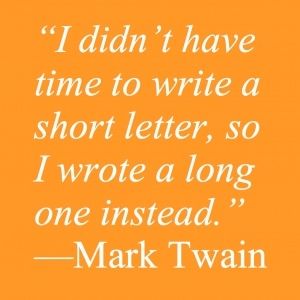Most people detest writing cover letters. As a result, they tend to find some template dug up from the internet or their most recent college career center visit and draft something to meet the requirement. What does it tend to include – repeating the resume.
Yawn. I’ve read so many of those variations of a cover letter that I want to poke myself in the eye with a pointy object. That might be less painful than listening to people drone on about their degrees and how “passionate” they are for the field of international education. After all, who ISN’T passionate about this field?!
While I teach an entire workshop on how to craft a cover letter specific to international education, I’m going to share 3 tips with you that will make you reconsider how you’re approaching this necessary task:
Tip 1 – Speak their cultural language
Every organization has its own culture. As you peruse different potential employers and study them as you look for your dream job posting, you’ll start to see patterns in the form of keywords and word strings. For example, a site like Amizade will quickly show you values represented in keyword strings and phrases such as “community,” “fair trade learning,” and “global citizen” while a site like AIFS indicates a more business like approach in terminology, using words such as “industry leader,” “value for the money,” and “global marketplace.” As a result, you’re going to need to apply vastly different approaches to a cover letter for each organization. I can assure you that you will hit a brick wall if you send in a template cover letter and simply swap out “Amizade” for “AIFS.” Instead, you want to find those keywords for the specific job and values words and show the search committee that you embody them with sincerity. Sadly, many people simply show a search committee that they just need a job.
 Tip 2 – Be concise, but impactful
Tip 2 – Be concise, but impactful
When you’re on the receiving end of the job posting, you’re likely getting over 100 applications to sift through. I can assure you that hiring committees, after the HR screening machine (if there is an online review first – which there usually is), will skim through resumes and barely touch on cover letters in the first review. So you may be thinking, why is the cover letter so important then? It will ultimately be used as a differentiator between you and other solid candidates when whittling down the pile. In addition, it is likely the only writing example that the committee will read before potentially meeting you. If you write a flowery, lengthy cover letter, the committee is not only too busy to read it as you want them to (with care, respecting intention to the fullest, etc), but it could also lead them to imagining you as a person in the office who doesn’t communicate with clarity ( think lengthy, rambling emails.) Your cover letter should not be longer than a page in 99% of cases. It should be written for impact, not speed. This also applies to your closing paragraph. If it is too standard each time, it will show your lack of customization (e.g. “Thank you for your time and I look forward to hearing from you soon.”) Instead, go for greater impact: “XXX’s efforts around improving diversity in education abroad and dedicating a position to specific and measurable goals around this have been the focus of my graduate research. It would be a pleasure to meet with you to learn more about your efforts and resources dedicated to this key goal. I look forward to a lively discussion.” That is a totally different level of committment and intention in cover letter writing!
Tip 3 – Fly your Yellow Scarf/ves appropriately
I’ve written about the Yellow Scarf in the past (the short version – what makes YOU stand out). What many people don’t realize is that you can have more than one yellow scarf and that you should pick only the yellow scarf/ves that apply to each posting you’re applying for and highlight them to differentiate yourself against the next stellar candidate in the pool. Mentioning what makes you unique in your cover letter is great unless it has little to do with the advertised role. Figure out in each job posting and in each org’s culture (see Tip 1) what is important to the hiring organization, them emphasize that your yellow scarf/ves put you in direct alignment with their needs and values. Sharing your yellow scarf/ves can also give you an edge in the pool of candidates e.g. if all other things are equal in a pool for a study abroad advisor role, but your yellow scarf is also that you are a social media maven, you want to share the value add of bringing you on up front in your cover letter.
Keep in mind that being “passionate” is NOT a yellow scarf! SHOW your passion by taking the time to customize each and every cover letter with your knowledge of the organization’s needs/culture, your strong writing skills, and what makes you unique and you’ll quickly see the improved response rate to your international education and cultural careers job search!
If you’re interested in more tips and training around the job search related to cross cultural careers and international education, check out the C4: Cultural Career Coaching Circle. It is is the field of international education’s original training program/community for those seeking a career in international education and offer a variety of professional development tools as either a la carte instant downloads, scheduled live group training sessions, group coaching as a cohort, or one on one coaching. (There is often no need to spend hundreds of dollars on a large scale program or thousands on another degree or certificate! The C4 allows you decide what you need more strategic coaching in – saving you money and time!)


